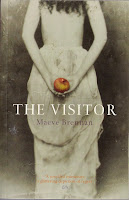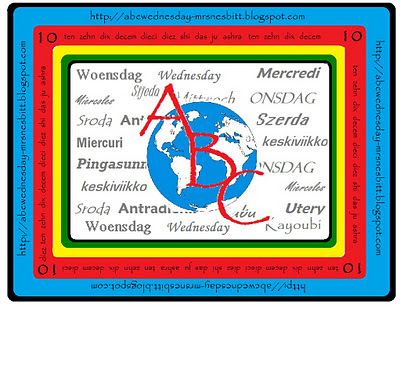
First published in Dutch as 'De ontdekking van de hemel' in 1992 and translated by Paul Vincent in 1996.
A 700 page
chunkster of a book (although the original Dutch was even chunkier) that roams through philosophy, architecture, linguistics and theology. In other words this is probably a great book for cold winter days and dark nights when you have time on hand.
page 4 -"That's right, They have discovered our profoundest concept - namely, that life is ultimately reading. They themselves are the Book of Books. In the year 1869 the wretched creatures discovered the DNA in the cell nucleus, and at the time we kidded ourselves that it was of no great significance, because they would never have the bright idea that the acid contained a code - and in any case would never be able to break it - but a hundred human years later they had deciphered the genetic code down to its subtlest details. We made them too clever, using the very same code.The premise of the book is that the covenant has been broken between The Chief and mankind beginning in the 17
th century with Francis Bacon's
* pact with Lucifer. Rationalism and the Age of Reason follow as mankind gain more knowledge. The book stats as a conversation between tow inhabitants of another sphere, which one presumes to be some sort of heaven, discussing how they have to do something to prevent the human race discovering heaven by putting on earth a 'spark', a human
deus ex
machina. A lot of things have to be contrived before that happens, which include two world wars and much death and destruction heading for one point, where the book begins. A meeting in the 1960s between
Onno Quist, black sheep of a powerful political Dutch Calvinist family and Max Delius, son of a Jewish mother and a German Nazi father. The two intellectuals become bosom friends.
The first chapters are very slow, after a racy prologue, but I guess if you are manipulating fate it takes time; which moves much faster for immortals than for mere humans. It ticks along quite nicely when the wheels of destiny start to turn.
Max meets Ada
Brons and they become lovers but she discovers that the bond between him and Otto is greater than his love for her so she finishes the affair, but moves in with Otto. The three friends travel to post revolutionary Cuba where a baby is conceived, but Ada does not know who the father is,
Onno or Max. She marries
Onno and Max attends the wedding.
Page 242 - "There was a rather charged atmosphere. The Amsterdam style with which everything was being done here - the bride and groom on a bike, the reception in a pub, artists everywhere, freethinkers and Reds, no sign of clergyman; instead, a revolutionary document from the Napoleonic period - and now they were saddled with a war criminal from the German occupation: their dismay was not entirely incomprehensible. Such things did not happen in The Hague. Of course everyone at this table knew who his father was, but hence who his mother had been. People here knew everything - except who he was. Onno's brother... offered him a chair with a friendly smile , and when he sat down amongst them he felt the weight of the family"Ada's father has a heart attack while she and Otto are visiting Max's workplace and they set off in a storm to the hospital, but a tree falls on the car, and although they all survive, Ada is in a coma. The baby is born some months later by cesarean section, Ada is still unconscious. Everyone loves this beautiful baby that never cries and has mesmeric eyes. But who is going to look after him? Various members of Otto's family offer but Max suggest that he and Ada's mother act as foster parents and this is what happens. This new family move in together as Max takes up an astronomy position outside Amsterdam. where a great radio telescope is being built. and with Otto's connections take residence in part of a castle occupied by artists and intellectuals who will, as fate planned, educate the young
Quinten for his ultimate purpose and destiny.
The telescope is positioned on land where there was once a camp during the war for Jews, like Max's mother, before being sent to concentration camps. All traces of that previous purpose are being eliminated. This is really the core of
Mulisch's exploration of 20
th century Dutch history and psyche, but through the prism of
Greco-Roman philosophy and the place of man in the universe as well as the Judea-Christian ideas driving the plot as time moves through the second half the the century and the world changes.
The novel is divided into four sections from "the beginning of the beginning" through to "the end of the end" and the 65 chapter headings each contain an idea, which is a wonderful construct.
This is a bumper book of ideas and a tour
de force of writing but essentially I found it a rather cold book. I did not really care about any of the people and their concerns and felt they were essentially just devices to move the plot along. Maybe
Mulisch was behaving as capriciously as the gods with his characters.
People love 'Discovery of Heaven' and seem to read it more than one, it certainly has enough ideas in it to stand more readings and maybe also lead to exploring the subjects he discusses.
The book has excited enough interest for a film to be made, with Stephen Fry taking the part of polymath Otto, on the insistence of Harry
Mulisch, a choice which I think would work very well. How much of the book would transpose to film I'm not sure.
Verdict - An interesting book makes me want to have a look at others he has written. The Complete Review have a overview of his work
hereQuote by Harry Mulisch in an interview I rather like "I have a theory that everybody has an absolute age which he will always have. My absolute age is 17"*Footnote on Francis Bacon
I studied the Renaissance as part of a course many moons ago so those concepts in the book were familiar to me but I knew very little about Francis Bacon and had to look him up in the Oxford Companion to English Literature.
He started off his career as a barrister and then was elected to parliament in 1584, but had a driven ambition. He was taken up and helped by Queen Elizabeth's favourite, Essex, who he was later to prosecute and convict of treason. Off came Essex's head. He rapidly progressed after Elizabeth's death and was created Viscount St
Albans but was convicted of taking bribes and his public life was over in disgrace. His writings were very influential and these are the ones that concern
Mulisch, as Bacon contributed to the division between art and science in contemporary, although not his own, time.
In one of those strange coincidence that often happen in life I read the following reprinted in, I think, the Independent newspaper as :
Best interview question"Rudolf Freiburg: Are you familiar with...Bacon's doctrine of the faculties of the mind, ratio, memoria and imaginatio?Julian Barnes: Francis Bacon?Freibur: Yes, Sir Francis Bacon. He sees parallels between faculties of the mind and fields of human knowledge. So memoria corresponds to history, ratio to philosophy, and imaginatio to poetry or literature. And then he says 'Get rid of imagination as it doesn't serve a purpose.' Could one say that treating the world as you sometimes do in your books, one can observe an infiltration of memory by imagination, and will this lead to - I hope the question isn't getting too complicated - would this also lead to the infiltration of history by imagination?"Julian Barnes: Gosh! 'I don't know' is the answer"From Do You Consider Yourself a Postmodern Author?, reprinted in Conversations with Julian BarnesFirst book read towards the 2010 New Authors, New Worlds, New Cultures Challenge hosted by
Literary Escapism and also incidentally to the Everlasting Europe Challenge on Library Thing.


